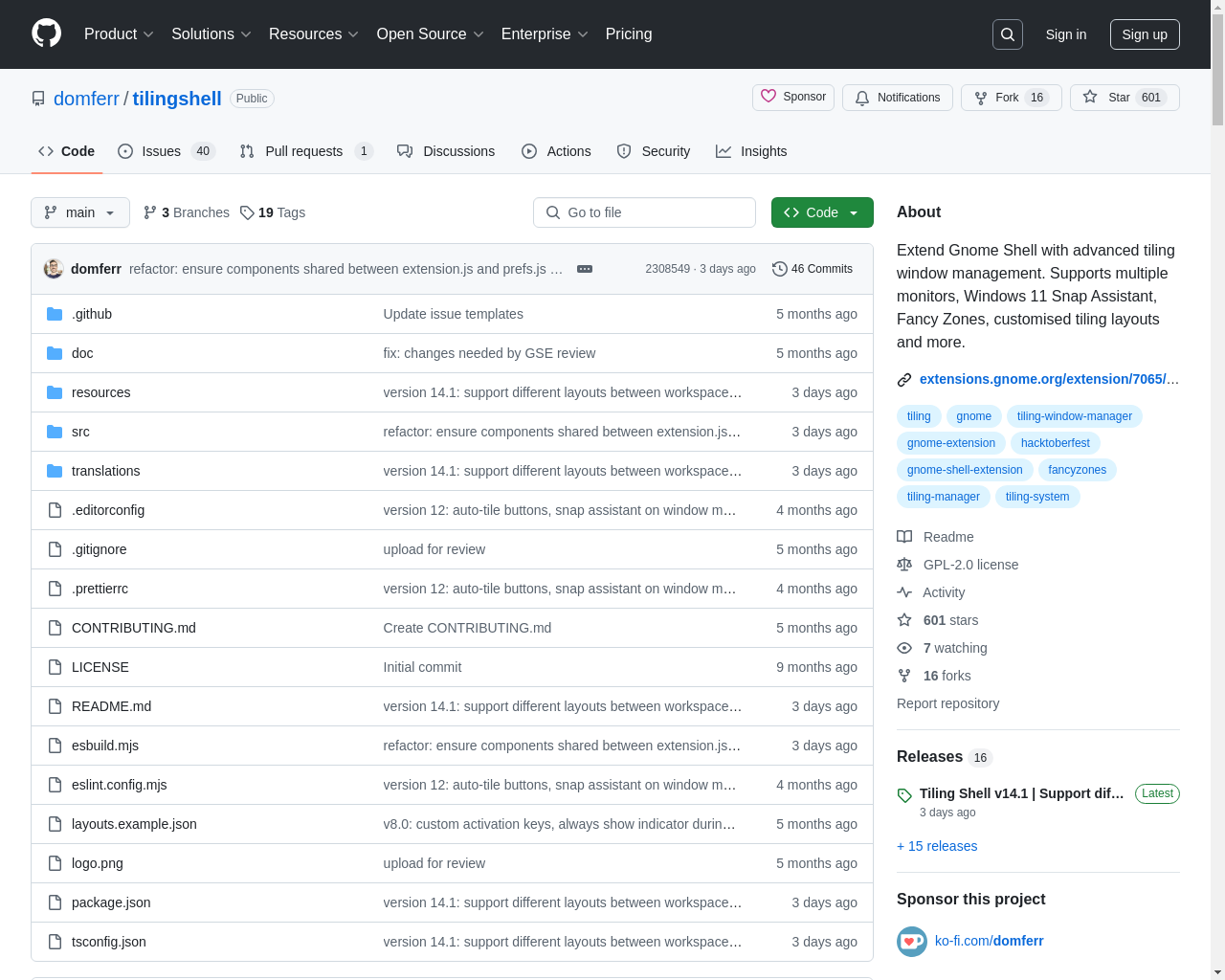

Highlight 1
The built-in custom layout editor allows for high levels of personalization, catering to the diverse workflows of users.
Highlight 2
Seamless operation across multiple monitors with varied scaling enhances user experience for those who utilize multi-display setups.
Highlight 3
Integration of keybindings and snap functionalities facilitates a more intuitive interaction with windows, paralleling modern operating system features.

Improvement 1
The documentation could be more comprehensive, particularly for new users unfamiliar with tiling window managers.
Improvement 2
Expanding customization options beyond the built-in editor could enrich the user experience, allowing for more tailored setups.
Improvement 3
Potential performance optimizations for systems with less powerful hardware would make the extension more accessible.
Product Functionality
Consider adding more advanced features like automated layout suggestions based on usage patterns.
UI & UX
A more intuitive onboarding experience with tutorials for first-time users could significantly improve the user experience.
SEO or Marketing
Implementing a blog or resources section on the website discussing use cases, tips, and tricks can engage the community and improve visibility.
MultiLanguage Support
Adding support for multiple languages would broaden the accessibility of the extension, attracting a wider audience.
- 1
What is Tiling Shell?
Tiling Shell is an open-source GNOME extension that modernizes window management in Linux, allowing users to create and manage custom layouts for their applications.
- 2
How does Tiling Shell support multi-monitor setups?
The extension is designed to work seamlessly across multiple monitors, correctly adjusting for different scaling factors, ensuring a consistent experience.
- 3
Can I customize the keybindings in Tiling Shell?
Yes, Tiling Shell supports customizable keybindings, allowing users to configure shortcuts that best suit their workflow.
